Wayne Gillam
There is no question that the novel coronavirus, also known as COVID-19, threw teachers and educators an unexpected curve ball this year. In response, the education team in the Center for Neurotechnology (CNT) discussed at-length which Center programs could be converted to an online experience in light of the pandemic and how to do that most successfully. Throughout the summer, CNT staff and faculty gained experience moving into a virtual learning environment, mastered the many challenges involved, and two staff members even published a paper about how to succeed at transitioning from in-person to online education.
One Center program that was particularly successful this year was the Research Experience for Teachers (RET). This seven-week summer program for middle and high school science, technology, engineering and mathematics (STEM) teachers completed its ninth run in August. The program is usually held on the University of Washington campus, but this year, it was chiefly a virtual learning experience. The program was administered and overseen by CNT Engineering Education Research Manager Kristen Bergsman with guidance from CNT Executive and Education Director Eric Chudler.
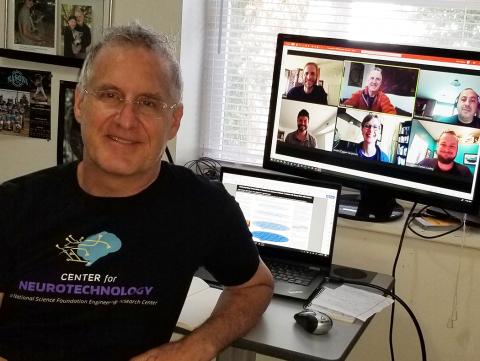
“This was something entirely different, to move everything online,” Bergsman said, who has managed the past seven years of the RET program. “I’ve learned a lot through the process of adapting the program this summer and am actually considering how in the future the program could be adapted to always include a remote option for teachers from further afield.”
The goal of the RET program is to provide an immersive research experience for middle and high school STEM teachers that is capable of giving them a solid background for bringing neural engineering concepts and practices to their students. In the program, teachers work with a mentor to develop and carry out a small-scale research project that is integral to the overall goals of the lab they are placed in. Program participants are also given guidance developing neural engineering curriculum for secondary school students. Traditionally, RET program participants’ research experience and curriculum development is accomplished through spending hours of work in the lab and at in-person meetings, but this year, COVID-19 necessitated a shift to doing as much as possible online.
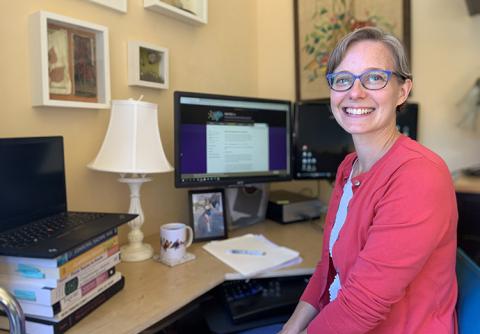
“I have so much gratitude for the host labs’ principal investigators (PIs) and mentors who were innovative, flexible and came up with meaningful and rigorous research projects that could be conducted remotely from home,” Bergsman said. “This program couldn’t have happened without CNT members Rajesh Rao, Sara Goering, Steve Perlmutter, Azadeh Yazdan and their lab communities being willing to try out a new way of doing things.”
Building long-lasting impact on students
Over the last nine years, the RET program has impacted thousands of students, and the numbers continue to steadily increase. Although the RET cohort is generally small every year (averaging between four to six participants), almost all teachers trained in the program go on to teach the neural engineering curriculum they developed to their students year after year. RET participants also often share their curriculum with fellow teachers and publicize it widely at local, regional and national teachers’ conferences, effectively bringing a wide range of neural engineering curricula to other teachers and students far beyond their own classrooms.
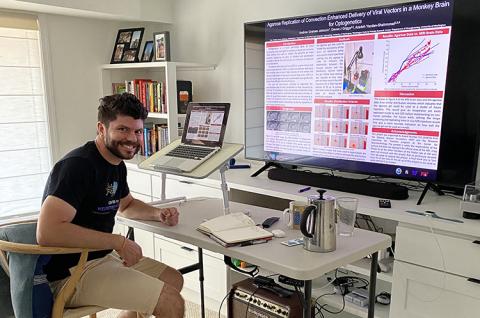
The program legacy also includes an extensive library of neural engineering curriculum materials developed by RET participants, which is available for free to other educators. The library can be accessed on the CNT website.
“Our library includes curricula on topics like neuroprosthetics, sensory substitution devices, artificial neural networks and neuroethics,” Bergsman said. “This is not the typical stuff of high school science courses, but our materials feature cutting-edge technologies that capture students’ imaginations while at the same time help them develop their understanding of core scientific and engineering concepts.”
This year, RET participants were challenged to integrate remote learning adaptations into their curriculum development. That way, they could be better prepared to teach the lesson plans regardless of whether students were to attend school online or in-person.

RET participants also have reported many professional learning opportunities and experiences that came their way as a direct result of participating in the program. For example, 2016–2019 participant Alexandra Pike has been named a co-author on several published academic journal articles based on her research in CNT member Matt Reynolds’ lab. 2020 participant Dawood Dawood was inspired by his work in Rao’s lab to apply for his computer science teaching endorsement, and 2020 participant Bill Conley was named as a co-author in an article recently submitted to a journal based on his work in the Yazdan lab. For Conley, his research work in the RET program, helping to develop therapeutic electrical stimulation protocols to better treat those impacted by stroke, was also personally meaningful.
“My grandfather suffered from two strokes, and he’s had trouble ever since,” Conley said. “This research affects me, because it is work that could possibly help him in the future.”
Support for teachers throughout the school year
Bergsman stays in touch with RET participants throughout the school year and beyond. She provides support for teachers presenting their curriculum at conferences, and she checks-in with teachers frequently to see how implementation of their neural engineering curricula is going in their classrooms. As a result, several teachers have returned to the program for multiple years to develop new curricula, participate in new research experiences and expand their knowledge and professional network.
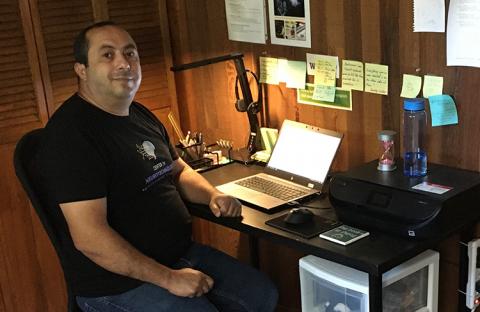
To collect substantive input designed to continuously improve the program, Bergsman enlists an external evaluator to gather feedback from the teachers and their students, which helps to evaluate the quality and effectiveness of the learning experience.
“Given the remote context this year, the teachers met with their mentors and PIs using videoconference technologies like Zoom and communicated through email. The teachers participated in lab meetings through videoconference as well,” Bergsman said. “The evaluation results show that the teachers were satisfied with the frequency of contact with their mentor and their mentorship relationship. Student evaluations will be forthcoming later in the school year.”
Looking ahead, Bergsman is thinking about how what she learned this year from moving the RET to an online environment could help further improve the program.
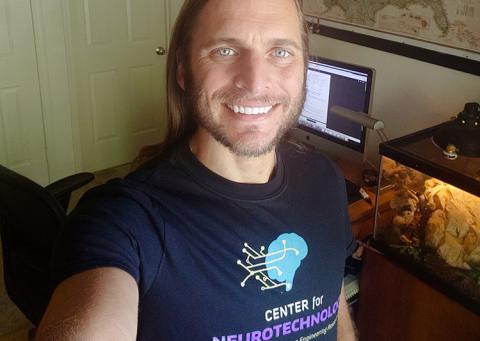
“The experience this summer has inspired me to think more about how we could adapt the program in the future to include a remote option for teachers who live further away and cannot commute to the UW campus,” Bergsman said. “For example, we have been unable to attract Eastern Washington teachers in the past for this reason. To address this, I am thinking now about how to operate a hybrid program that combines in-person and remote participants.”
She also expressed gratitude to this year’s lab mentors and program participants, saying that “flexibility” and “grace” were key words to describe how people treated each other.
“There were so many challenges this summer, and yet it was a wonderful cohort of kind, generous, flexible people who were willing to jump in and make this work,” Bergsman said. “I feel like we developed a powerful, professional learning community together.”
Learn more about the RET program on the CNT website.
